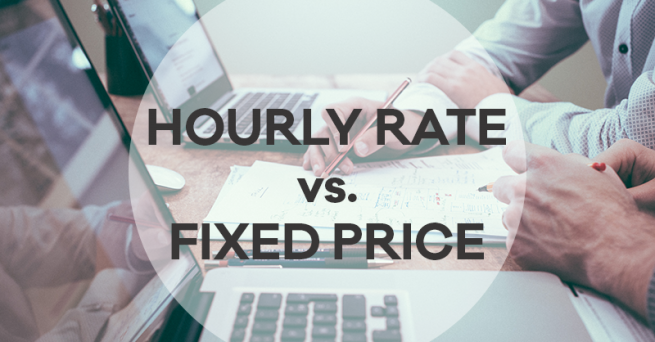Mobile app development is a common scenario nowadays. Entrepreneurs and the businesses are continuously are cashing into this and needless to say, the trend is escalating ferociously.
Now, when some business or the entrepreneur decides for the app development, there are plenty of points that must be taken into account. The very first that comes in the queue is outlining the vital features for the app.
Throughout this process of research and planning, there is a concern that keeps on running in the user’s mind. That concern is: How much does it cost to develop a mobile app. Before actually preparing the blueprint of the project in their minds, most of them want to have a rough ideation about the cost that can be incurred.
Since we are talking about price structure, let me tell you deciding it exactly is really difficult for any developer or the Mobile App Development Company.
The price structure for an app depends on the number of factors such as:
- Are you hiring a freelancer or an in-house developer community?
- The platform that you are selecting? Hybrid or Native
- The development team and its location
- The features and the technical aspects
- The UI and UX design parameters
- Testing standards
- Getting the app published on the App Store
Furthermore, if you go on planning for developing an MVP, the cost of development is likely to increase. So, for easing out your task, we will here outline a few of the costing models that will help you to determine the cost of app development?
Most clients are actually aware of it as they undertake an extensive research about it before processing for developmental standards.
- Fixed Pricing Model
- Time and Material Model
In this post, we will be shedding some light on the major differences between both the pricing model. Furthermore, we will be describing here the major key points that are associated with each of the models plus the correct and appropriate models that will just fit best into your venture.
Fixed Pricing Model
As the name describes, the fixed price model comes with a stapled price and leave no space for any updates. In this scenario, the cost and the deadline of the project are decided prior to the project development.
Few of points that are outlined under this pricing model are:
- The app idea
- Core attributes and functionalities
- The platform on which the app will be developed
In this pricing model, all the points are clarified between the client and the development, before undergoing any app building process.
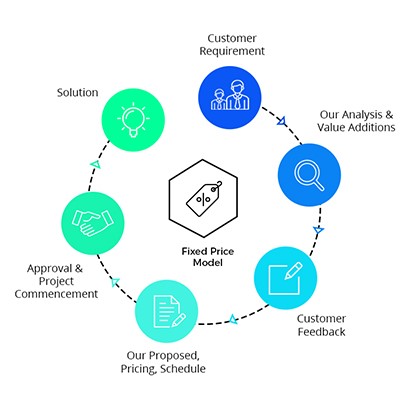
While adopting for the above pricing model, the client is pretty much sure about the success of the product. Moreover, under this model, the developmental team that is deployed is small in size, since the modules to be integrated are less complex in nature.
One fact that remains constant in this case is, the client is not allowed to introduce any changes or the updates in the app. All the terms and condition associated with the development are signed on a mutual basis.
Thus, make sure that you are very much sure on the grounds of attributes, as once signed, the doors for the updates become closed.
However, there are some drawbacks that are associated with it. The quality of the project is compromised in this model as the price of development is usually low.
In case, if users don’t embrace your app, the probability of getting the app failed increases. In order to deal with the situation, Mobile App Development Firms, add an extra column in their pricing structure for introducing any alteration in case the app idea totally crashes in the market.
Essential Features of the Fixed-Cost Agreement
- Once the developmental cost is finalized no changes in the features and on any other ground are not accepted.
- The app development firm that is indulged in developing the app knows about all the ifs and buts, that must be considered during developing the app. Therefore, all the UI and UX designs are implemented in such a way, that it makes the overall app look justified and uniform.
- The deadline associated with the venture is fixed.
So, what are the factors that make the fixed pricing model suitable for your project?
- When you are looking for a simple app with zero updates.
- When you are running out of budget but is really looking for an app.
- In case, when you are looking for developing an MVP in order to capture some basic user views.
- You are pretty much sure about the app idea and the platforms that are to be selected.
The Time and Material of Hourly Pricing Model
We can define the hourly model as the most convenient one when it comes to the cost of an app. In this case, the concept is very much forward. The price for your venture development is decided on per hour basis. It differs on the basis of region and the mobile app development company you are selecting.
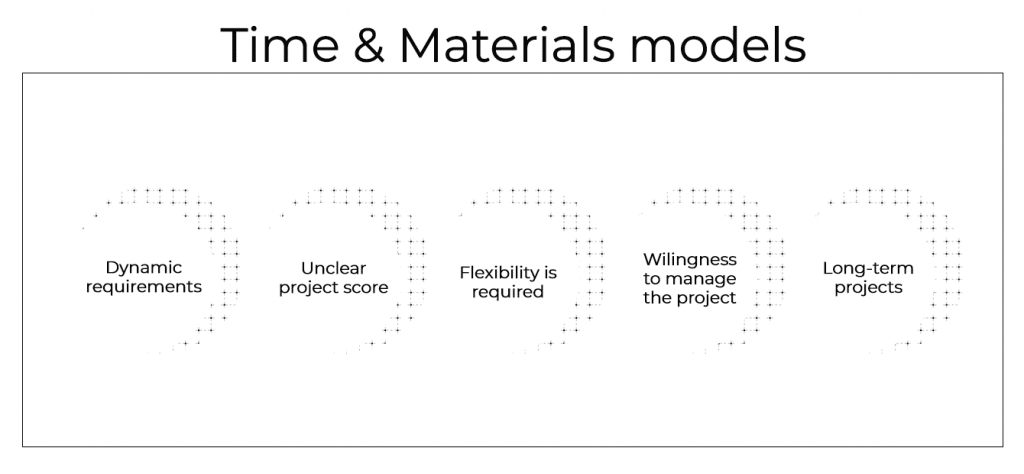
There is a basic math that goes behind the calculation. The cost is measured by multiplying the cost of per hour and the app development cost.
For instance, if some company charges $ 30 on per hour basis and the app development cost is 500 then the price can somewhat be $30X500= 15,000.
Needless to say, the time and material model or the hourly model is mostly embraced by the clients. The model is highly preferable for the clients, as they can easily opt for any updates if required. They can provide their verdict and can suggest the improvisations so as to hike the quality of the overall project.
Under this pricing model, the client is allowed to introduce any change in the ongoing process as per their user’s requirement and can make the provisions for adding the attributes that are mostly loved by their users.
Characteristics of Time and Material Model
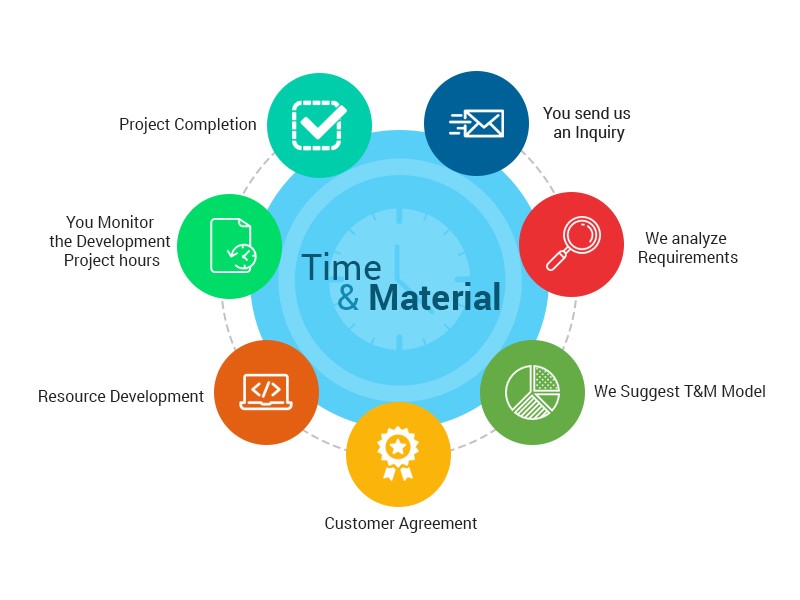
According to the number of working hours invested by the Hire mobile app developers, the price for the project or the module is decided.
In the time and material model, the cost is not finalized. It can increase or decrease, according to the number of features added or deleted.
The timeline for the project is also not fixed in this model. Since the number of features are not fixed in the project. Therefore, it can take as much time as required in developing the venture.
In this project, the client plays an important role. He can provide any kind of inputs at any point of the development process.
So, in what cases, the time and material model is successful?
- The time and material model is best, in case the ideation about the app is not clear to you.
- The projects that are complicated and requires rigorous testing.
- In case, when the client wants to get everything done right in their direction, time and material model fits best.
So, which one is best: Fixed price or time and material model?
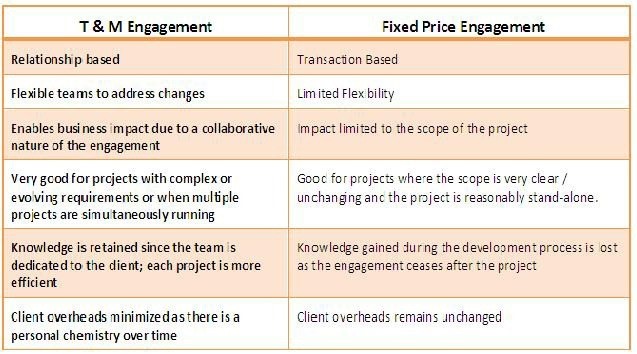
In the above post, we shed light on some of the most popular pricing models. Almost, in all the mobile app development companies, these two models are used for calculating the price of any project.
Both of the models embark with their own set of advantages and disadvantages, thus decide accordingly, that which pricing model caters to your project in the right way.





